I like scribbling with my Kindle Scribe but there's a better writing tablet
Great for books but not reMarkable at writing
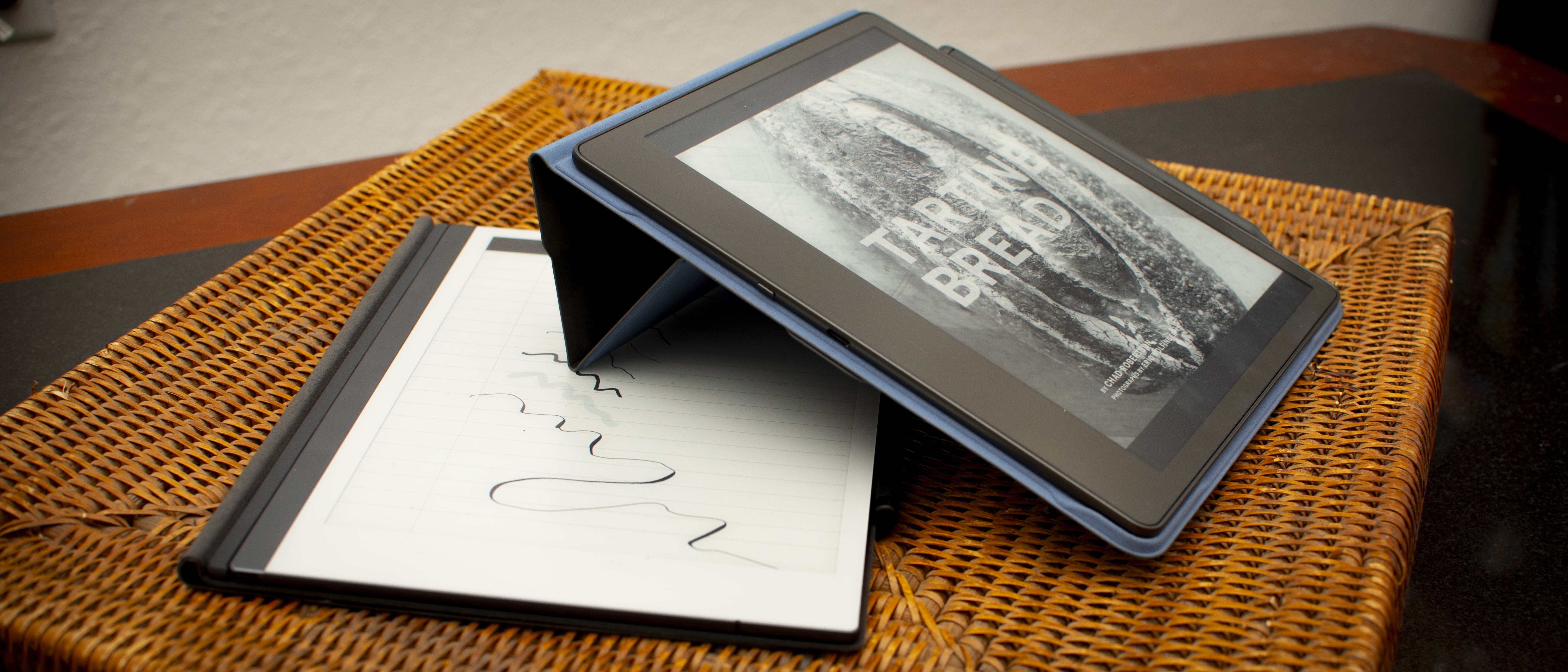
For the past month, I’ve been doing something I haven’t done in decades. I’ve been using a pen. Not just to sign forms or scribble a Post-It note, but regularly, to write the things I would usually write on my laptop keyboard. I’ve been trying out the Amazon Kindle Scribe and the reMarkable 2, and if you’re interested in writing digitally, I’ll tell you if one of these tablets is right for you.
Straight off the bat, though, I have to admit that I hate using a pen. I have terrible handwriting. Until I was a grown adult, my writing was illegible to most people who read it. As soon as I could, I jumped into the digital world and relied on a keyboard for all my notes and anything that needed to be written down, but it felt like something was missing.
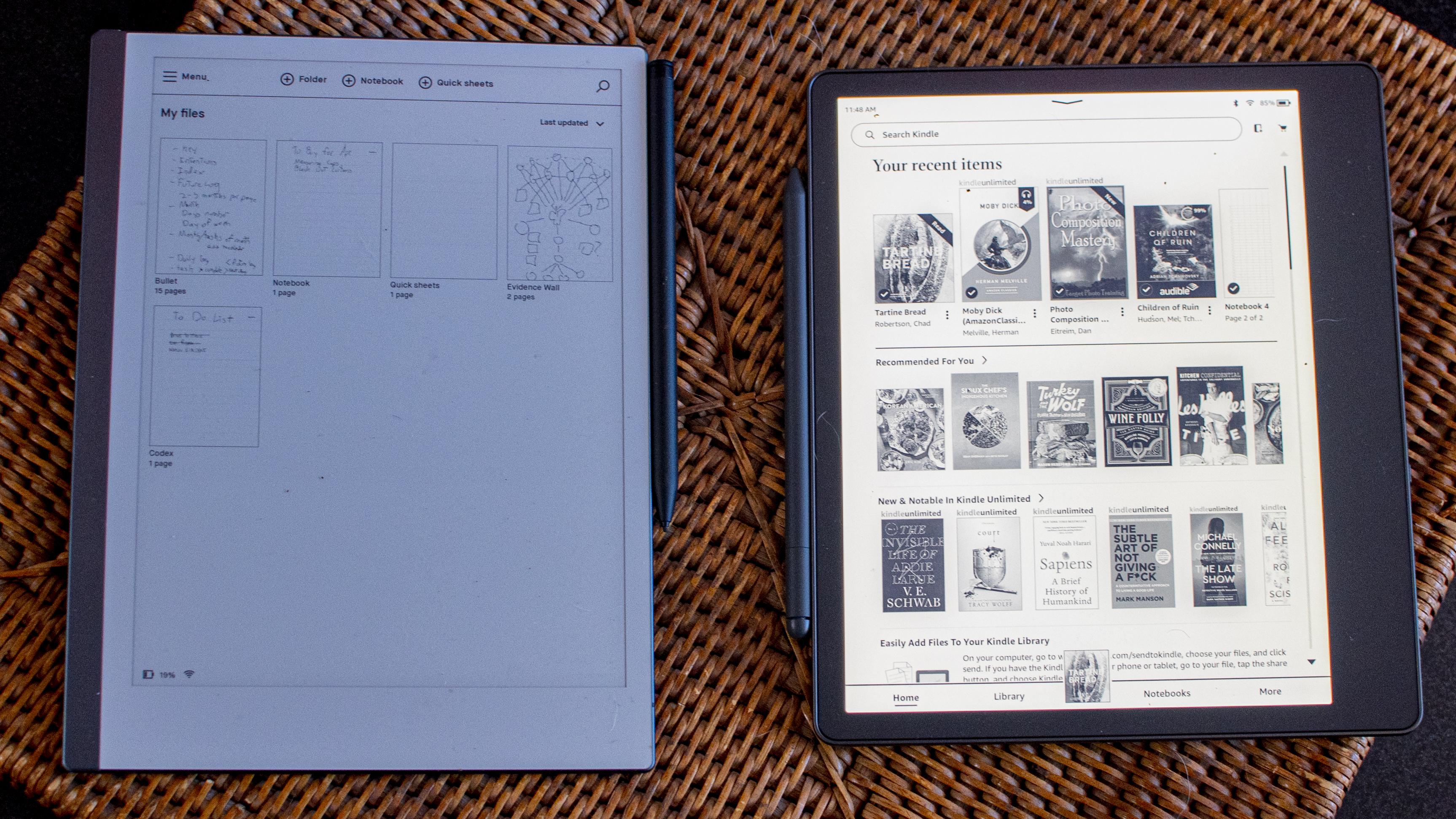
I missed the freedom of just jotting. When I need to write on a laptop, there are steps to take. Apps to open. There are delays. When I want to write on paper, I just need to find the tools. I don’t need to turn on my pen, or close tabs on my Leuchtturm notebook so a new page will open.
On the other hand, when I switched from handwriting to typing in school, everything changed. I actually started taking notes. As a former high school teacher, I can tell you that even if you don’t study your notes later, the act of taking notes during a lecture – physically writing them down – can greatly improve your understanding and retention.
What I want in a writing tablet
With that in mind, here’s what I want in a digital writing device. I want a tablet that is spontaneous enough to let me quickly jot and jump into writing. I also want a device that is accessible so that I’ll want to use it, the way my laptop made me want to take notes in class.
I was excited when Amazon announced the Kindle Scribe. Like most people, I didn’t know much about the world of E Ink tablets besides the Kindle and some other ereader devices. I know that there is one company that makes E Ink screens, the eponymous E Ink Corporation. Devices like the Amazon Kindle, Kobo Elipsa, and Onyx Boox Note Air 2 all use e ink displays sourced from E Ink.
Pretty much all of the E Ink writing tablets on the market right now use a screen in the 10-inch range, and pens that use electromagnetic resonance technology, similar to Wacom drawing tablets. The Kindle Scribe opened my eyes to the world of writing on E Ink, but reMarkable was the pioneer, and its latest device, the reMarkable 2, is one of the Scribe’s most visible competitors.
What the reMarkable 2 gets right
I was familiar with the reMarkable 2 device because my friend Daniel Bader at Android Central gave it such a glowing review, saying it changed his life. If that doesn’t make you curious, you aren’t a tech enthusiast like me.
The reMarkable 2 is very thin and light. In fact, the company recently started touting its product as the thinnest tablet you can buy, though that’s a weird way to sell a tablet that can essentially only do one thing.
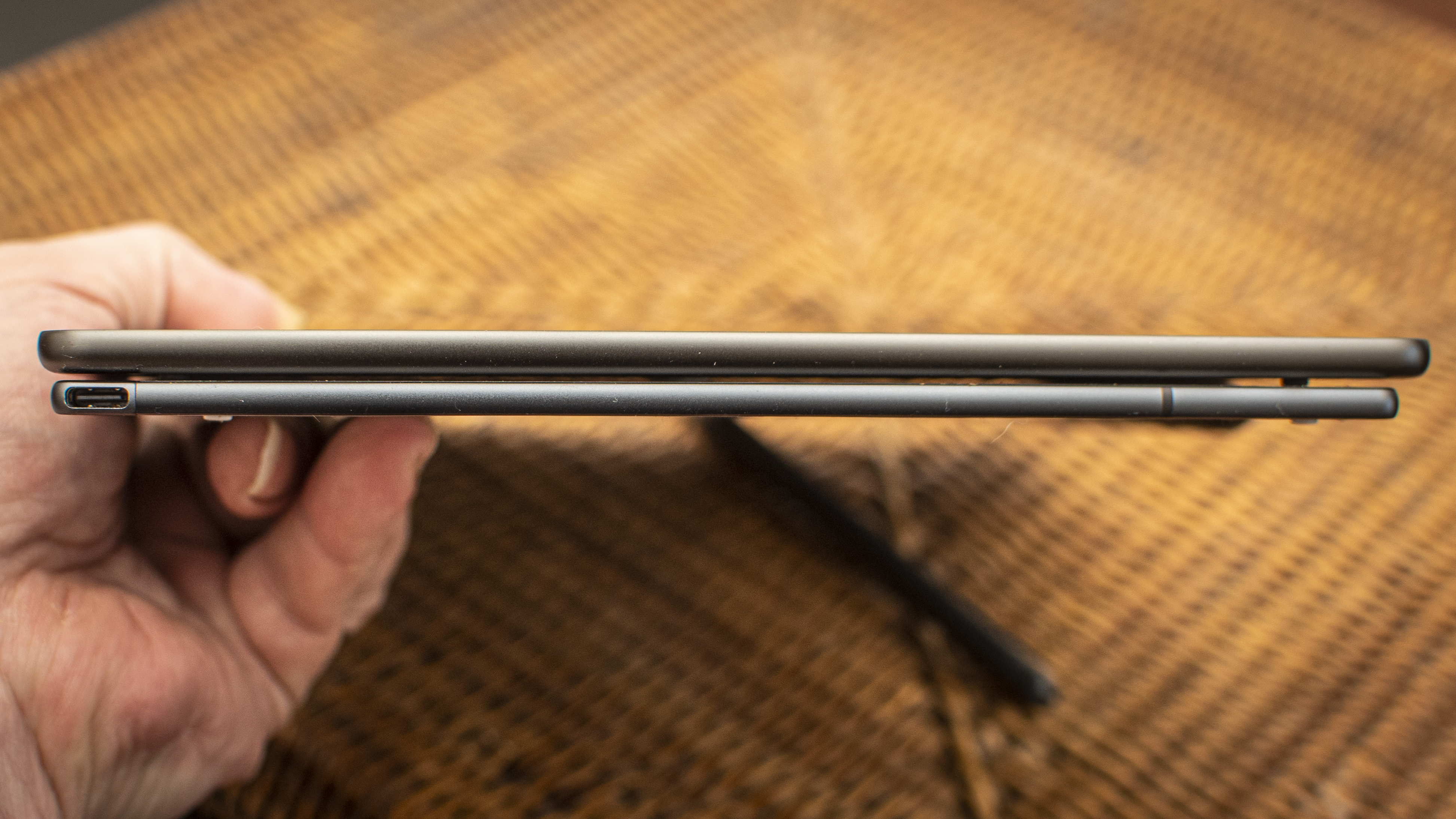
The reMarkable 2 is meant for writing, and if you just want to write on a tablet, this is the one to buy. The folks at reMarkable offered me a review unit a month before the Kindle Scribe came out, and they were wise to send one my way. If I’d only used the Kindle Scribe for writing, I would never know what I was missing.
The reMarkable 2 tablet has a ton of template options, and they all look good - soft and realistic, not hard and digital. There aren’t just options for lines, grids, or dots, as you’d expect. There are drawing templates with perspective lines. There are music tablature sheets for piano and guitar. There are specialized calligraphy pages.
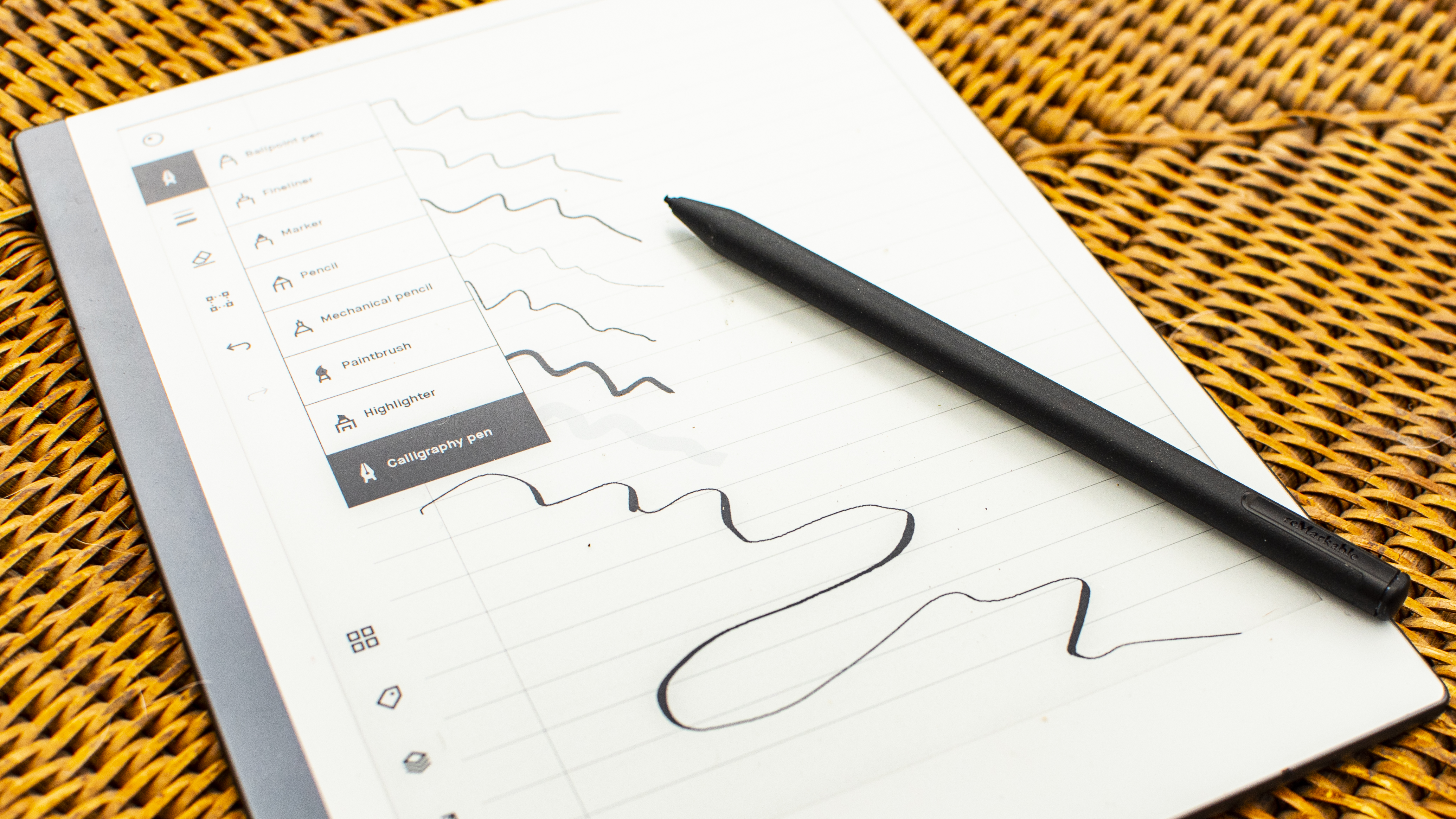
You can also do a lot with the pen. There are eight different pen styles, including a paintbrush and a calligraphy pen. The pen is pressure and tilt-sensitive. You can change the thickness, and even change the color to blue or red ink if you export the page to send it, making it look even more like a real pen.
When you want to send a page along, you can send it as-is, or you can have the reMarkable 2 transcribe it to typography. In my experience, the tablet did a great job guessing my chicken scratch handwriting. I was able to save my notes and send them as an email or upload them to the cloud.
What the reMarkable 2 gets wrong
Unfortunately, there are a few big caveats with the reMarkable 2 tablet. The first is that there is no backlight. That’s how they build it so thin. If it’s dark, you won’t be able to see it. To be fair, my paper notebook has no backlight either, but the Kindle Scribe certainly does.
The reMarkable 2 is also deceptively priced. The company lists the tablet at $299 / £299 / AU$499, but that’s without its stylus. There’s absolutely no reason to buy a reMarkable without it, and the pen costs an exorbitant $79 / £59 / AU$119 for the cheap version.
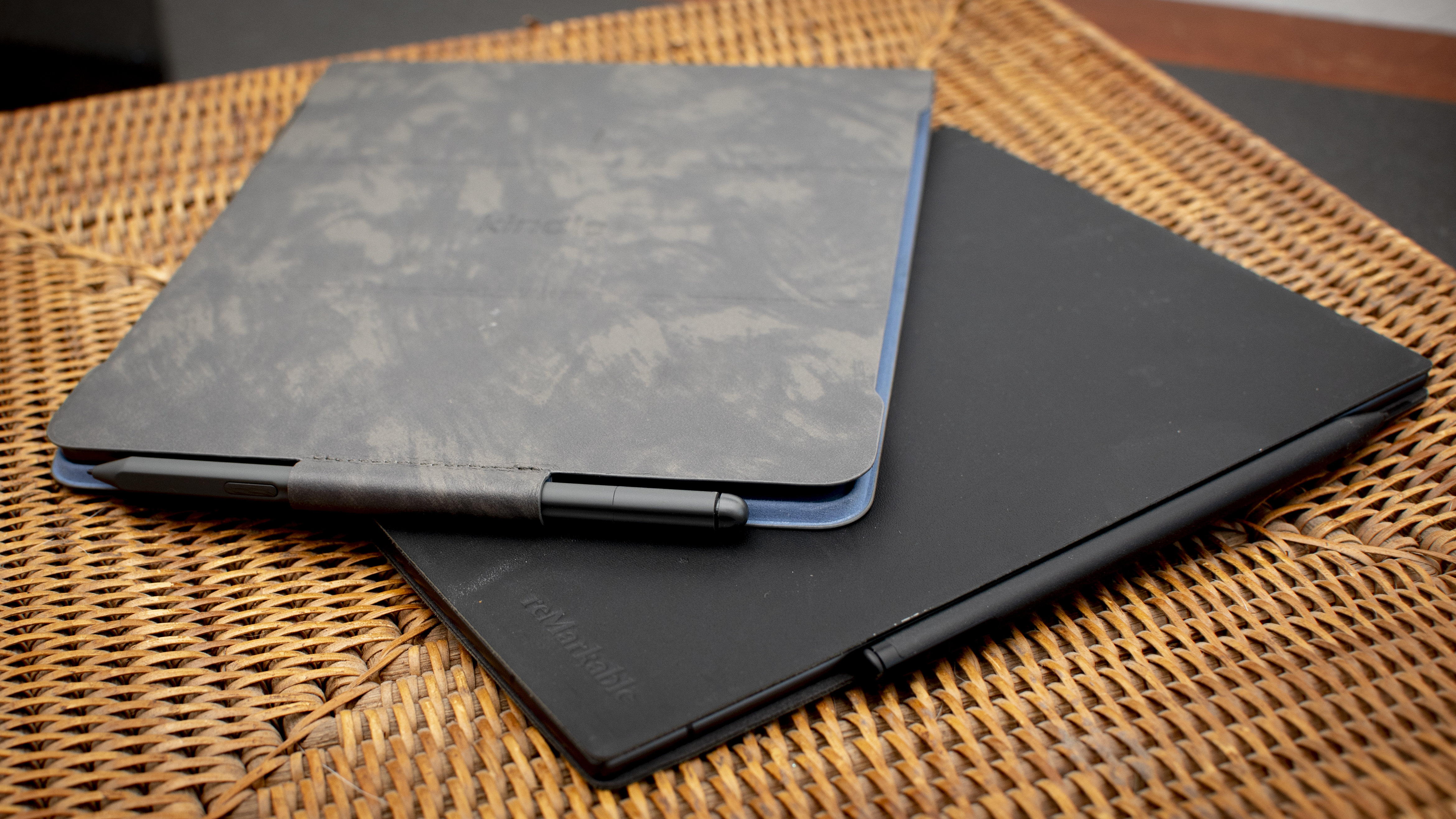
The version with an eraser costs $50 more. It would be expensive if it only cost $50, but instead, it costs $129 / £109 / AU$199. That’s flabbergasting. It’s unreasonable. I find this pricing offensive and I can’t say enough terrible things about the way reMarkable prices its products. Except to add that the “Folio” – which does not actually fold – costs another $79 / £69 / AU$119 and it doesn’t even cover the tablet entirely, it leaves a large chunk exposed.
Thankfully, the company sent me the nicer, $129 / £149 / AU$249 folding book folio to review, along with the premium pen. In all, the company sent me a bundle that costs nearly $600 / £560 / AU$950 to review a product advertised at $299 / £299 / AU$499.
What the Kindle Scribe gets right
Unlike the reMarkable 2, the Kindle Scribe is a great ereader, one of the best Kindle tablets. It’s the largest Kindle you can buy, and it’s been almost 10 years since Amazon offered an ebook reader this big. If you want a big screen for books, and I really do, the Kindle Scribe is the only option.
It may seem expensive compared to other Kindle ereaders, but that screen is much larger. With the Scribe, I don’t feel like I’m paying for luxury, like I did with my Kindle Oasis. I feel like I’m paying for more… well, Kindle. Besides, the Kindle Scribe is still cheaper than the cheapest Apple iPad.
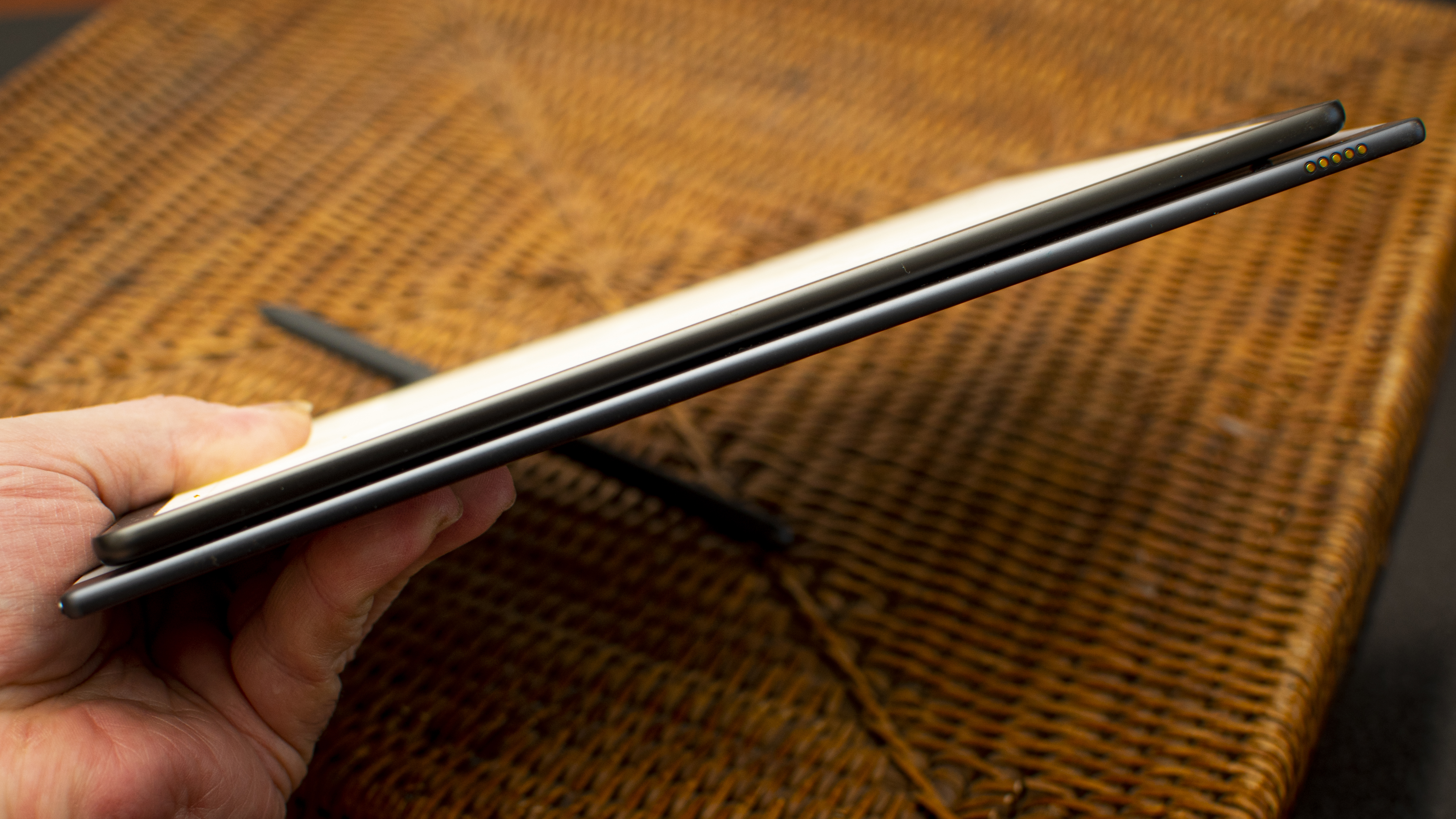
Amazon also sent me a premium pen and a folding cover for the Kindle Scribe, and unlike the reMarkable, the Scribe actually gives me a slot to hold the stylus when it’s wearing the cover. Without a cover, the pen attaches to the side of the tablet via a magnet.
I hate the magnet attachments. I’ve argued with our US Editor-in-Chief Lance Ulanoff over whether it's an ideal way to stow a stylus. He claims to never have lost a pen attached with a magnet. I lost the Scribe’s stylus in the first week of reviewing.
I’m not alone – TechRadar’s APAC Managing Editor, Sharmishta Sarkar, keeps misplacing not only the Kindle Scribe’s pen but also the stylus that comes with the Onyx Boox Note Air series of E Ink tablets. The Scribe has a stronger magnet by comparison.
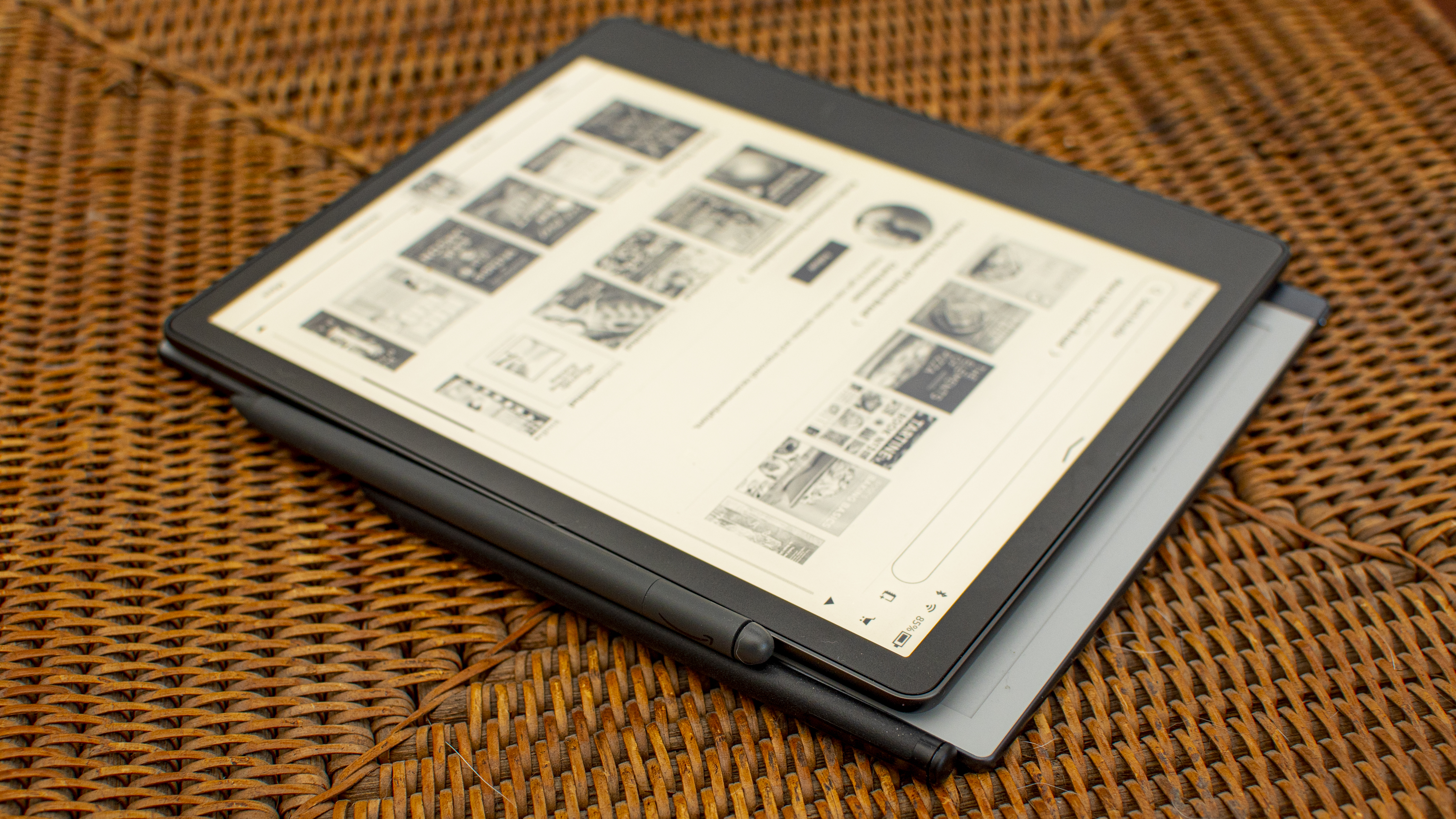
Magnetism aside, the Scribe, being a Kindle, has access to a massive ebook library. You can read all of the books you bought from the Kindle Store on Amazon, and you can subscribe to the Kindle Unlimited library. If you happen to be a Prime member, you have free access to the Prime Reading library. Kindle users in the US can also use free apps from their local public library to sideload free library books to the Kindle.
Back in May, Amazon promised that Kindles would be able to support ePubs (the most common ebook file format) by the end of 2022 – well, it is the end of 2022 and there’s still no ePub support on Kindles, but conversion tools like Calibre are available.
This is a huge advantage over the reMarkable 2 tablet, which can read PDF and ePub files, but does not have a library storefront to load books. You can certainly get books onto a reMarkable 2, but without a backlight it’s not as good as the Kindle Scribe for reading.
What the Kindle Scribe gets wrong
You probably noticed I didn’t mention writing at all when talking about what the Kindle Scribe gets right. It just doesn’t get writing right. OK, that may be a bit harsh, because the writing experience feels very smooth with no lag. Beyond the feel of the pen, I didn’t like using the Scribe for writing as much as I did the reMarkable 2.
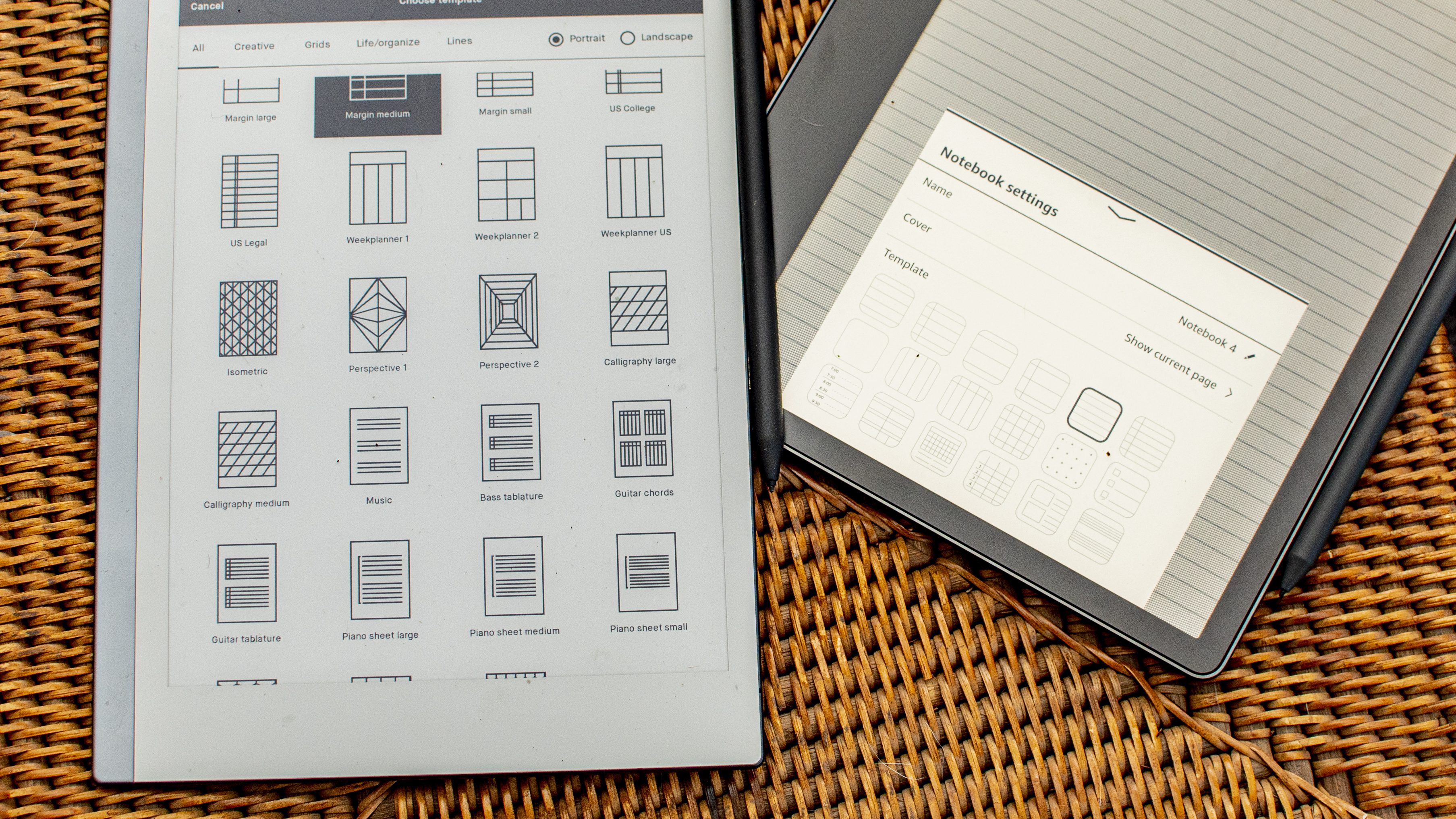
For note taking, it has very few template options, and these all look strangely hard and digital, unlike on the reMarkable 2. There are no pen styles to choose from. You cannot even convert your writing into type.
You’d think that at least the Kindle Scribe would do a good job with note taking in books, since it is a Kindle. Nope. You cannot write on a book page. No taking notes in the margin, or highlighting a section you want to save. If you want to take notes in a book, you write in a sticky-type note box, and you can reference your sticky notes later.
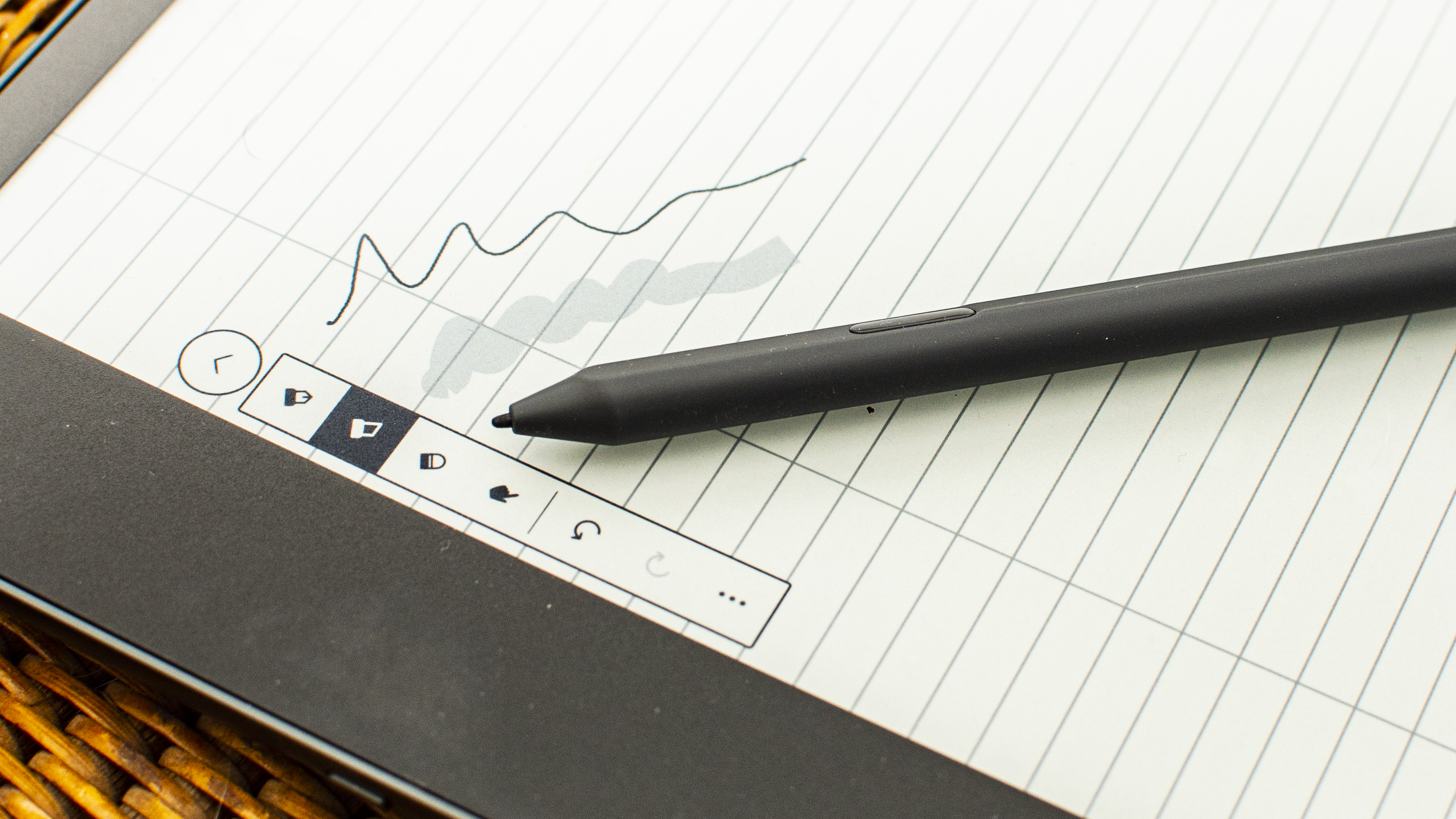
This is a complete failure on Amazon’s part. It’s like Amazon asked how it could add writing to a Kindle in a useful way, then didn’t wait for a proper answer. Instead, it took a big step backwards from that. Every aspect is just shy of being what I want. There aren’t enough templates. There aren’t enough writing features. There’s no way to write on a book, and there’s no way to convert writing to type to then export to other devices. That’s just a massive fail in my (ahem) book.
What other e ink writing tablets should you check out
The e ink tablet I’m most curious about is the Kobo Elipsa, which TechRadar’s APAC Managing Editor enjoyed using in her review. It comes a bit closer to what I want, allowing users to write directly on a book’s virtual page. Unfortunately, you can only write on books you purchase from the Kobo Store. You cannot write on sideloaded ePub books, which seems like a silly omission, since editors are more likely to receive an ePub or PDF file of a book.
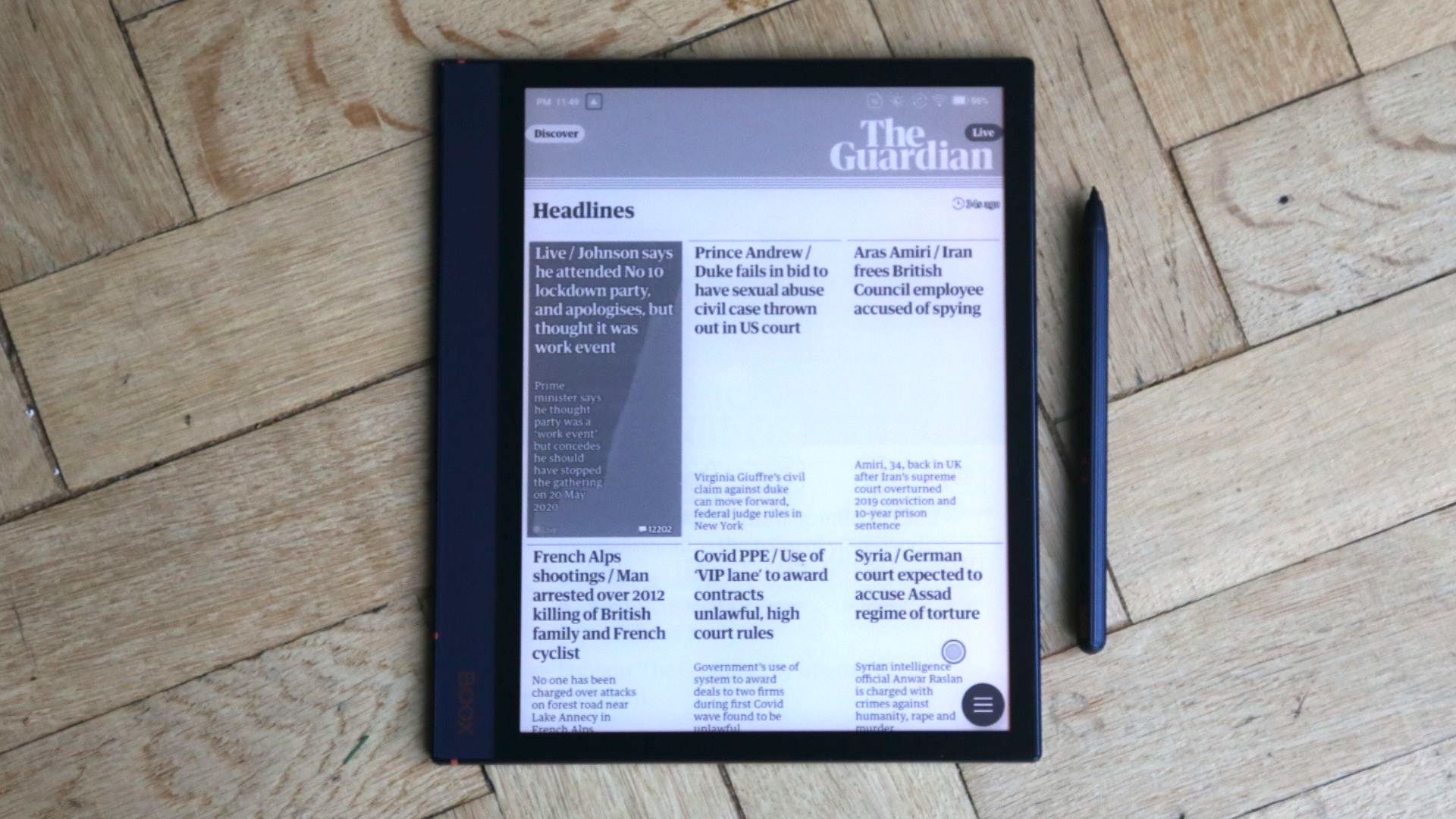
The Onyx Boox Note Air 2 is a much more robust device that runs Android 11, so you can load apps like Amazon Kindle or a public library reading app. It also has plenty of note-taking features, including transcribing writing to type. The screen isn’t quite as nice as the Kindle Scribe, but it can do so much more.
The Boox Note Air 2 and Kobo Elipsa seem like they are more expensive, both in the $400 range, but both of those ship with a pen as well as a cover. In all, the price is very competitive across all of these devices.
Should I buy a reMarkable 2 or a Kindle Scribe?
If you want a very snazzy writing tablet to replace the paper you are using, the reMarkable 2 can fit the bill nicely. The features don’t venture beyond your writing needs, but it does a sterling job at handling note taking, journaling and doodles, even for more serious artists and musicians.
Unfortunately, it’s probably not worth the ultimate price for most people, and by that I mean the total you’ll pay when you add a pen and a cover. At $299 / £299 / AU$499, the reMarkable seems cheaper than the Kindle Scribe and a real bargain. The true cost is much higher, though, and the minimum will run you more than Amazon’s big ereader.
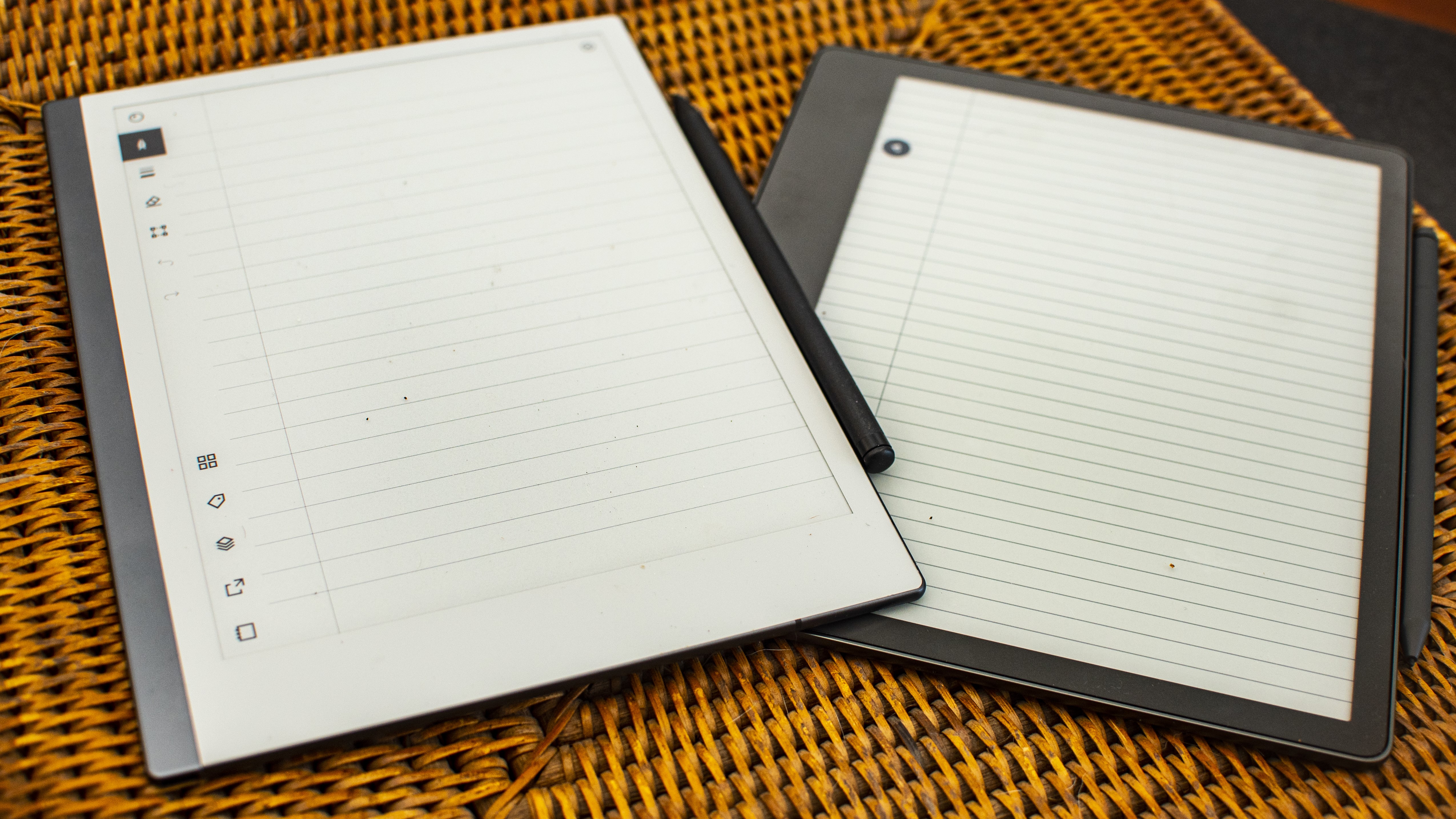
The Kindle Scribe, on the other hand, just doesn’t do a good job with writing. Not at all. It has very few features for note taking and journaling. Even though it’s a Kindle, the writing features don’t give me the bare minimum I’d want for taking notes in books.
If you don’t care about writing, however, the Kindle Scribe is still an excellent Kindle. Amazon didn’t reduce the sharpness of the screen to make the Scribe larger, so books look better than ever on the humongous display. It costs more than other Kindles, but it’s worth the price if you really want a big screen, handy for comics and graphic novels.
Is there one writing tablet that is better?
I wish there was one device that could do everything. I wish the Kindle Scribe had all of the reMarkable 2 writing features, and let me write directly on my books like a Kobo Elipsa. I wish the reMarkable 2 would run Android to load the Kindle app, like the Onyx Boox tablets can do. If you’re shopping for an e ink writing tablet, you have to settle a bit, but you can still find the right device.
If you’re looking for an extensible e ink tablet that is feature rich and does everything, like an iPad, keep looking. If you want a big ereader, get the Kindle Scribe. If you want the best writing tablet, and you don’t mind paying more, the reMarkable 2 is the tablet to buy. Finally, if you can take our APAC Managing Editor’s word, she’s picked the Onyx Boox Note Air 2 Plus as her favorite E Ink notetaking tablet.
Get daily insight, inspiration and deals in your inbox
Sign up for breaking news, reviews, opinion, top tech deals, and more.

Phil Berne is a preeminent voice in consumer electronics reviews, starting more than 20 years ago at eTown.com. Phil has written for Engadget, The Verge, PC Mag, Digital Trends, Slashgear, TechRadar, AndroidCentral, and was Editor-in-Chief of the sadly-defunct infoSync. Phil holds an entirely useful M.A. in Cultural Theory from Carnegie Mellon University. He sang in numerous college a cappella groups.
Phil did a stint at Samsung Mobile, leading reviews for the PR team and writing crisis communications until he left in 2017. He worked at an Apple Store near Boston, MA, at the height of iPod popularity. Phil is certified in Google AI Essentials. He has a High School English teaching license (and years of teaching experience) and is a Red Cross certified Lifeguard. His passion is the democratizing power of mobile technology. Before AI came along he was totally sure the next big thing would be something we wear on our faces.